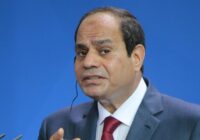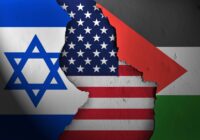It is easy to bemoan Africa’s post-independence fate. Multiple dictators, corrupt elites, and endless conflicts and failure to achieve economic growth like East Asia makes a sorry tale. Yet here is another story that is told far more infrequently. Here are some of Africa’s independent successes that need to be acknowledged.
The Story of a Dam
A large recent African success is Ethiopia’s Grand Renaissance Dam. Built on the Blue Nile about 40 kilometers east of Sudan, Ethiopia completed the third phase of filling the reservoir for this huge dam in August last year. Two out of its 13 turbines are now operational, generating 750 megawatts of electricity. Ultimately, the dam is expected to produce more than 5,000 megawatts, which will more than double Ethiopia’s current output.
The construction of the dam is a triumph for Ethiopia. Neighbors Egypt and Sudan opposed the construction, fearful that the dam would reduce their share of the Nile waters. Their fears may be misplaced. The purpose of the dam is to generate hydroelectric power. It might change the timing of the flow of waters downstream but is unlikely to divert much water from the Blue Nile.
The Grand Renaissance Dam is a great Ethiopian triumph. The project was estimated to cost $5 billion. Given Egyptian hostility, international donors turned shy. Ethiopians dug into their own pockets to build this dam. In 2011, when dam construction began, Ethiopia’s GDP was a mere $31.95 billion. To put matters in perspective, the country decided to spend 15.65% of its GDP to build one single dam.
The entire country pitched in for the dam effort. The common women and men of Ethiopia bought bonds to fund the dam. The government persuaded employees to contribute a portion of their incomes to the project. Critics suggest that there was a fair degree of arm-twisting and this is probably true, but it is fair to say that Ethiopians saw this dam as a national project.
Impressively, the majestic wall of the dam was constructed without external funding. It is certainly true that China has pitched in to help construct the dam. In the US, China’s role has stirred controversy. Chinese companies have undertaken some of the construction work. In 2013, China provided Ethiopia a “loan of $1.2 billion USD in 2013 to build power transmission lines connecting the dam with nearby towns and cities.”
Yet it is important to remember that this impressive dam is fundamentally an Ethiopian achievement. It is a great example of a very African success.
Educating the Poorest
At the other end of the continent, many poor pupils are let down by South Africa’s education system. Amnesty International, commenting on this “broken and unequal” system, reported that it was “characterized by crumbling infrastructure, overcrowded classrooms, and relatively poor educational outcomes, is perpetuating inequality and, as a result, failing too many of its children, with the poor hardest hit.”
Even in such a system, a rare success has blossomed in an impoverished community. Bulungula College, an independent school in rural Eastern Cape, has become the first school in the district to achieve a 100% matric pass rate. This college was set up by Bulungula Incubator, which was founded in 2006. Then, “only one parent in the local Xhora Mouth community had passed matric.” In this community, “an average of six people from the community matriculate each year, and 95% of school learners from the area do not pass grade 12.”
In 2022, all 36 learners in the class of 2022 passed the matric examinations. Mthandwa Sincuba is the principal of the college. He hit upon the strategy of extra classes. In his words, “From the beginning of the year, we started with extra classes from 6am until 9pm. We also had weekend classes.”
Under Sincuba’s leadership, Bulungula College also takes a progressive approach. It provides students with better services, has a strict policy against corporal punishment, provides support to children from families that struggle to provide adequate nutrition, offers birth control to all girl students and encourages those who become pregnant to stay on in school until and after they give birth.
This extraordinary project was the brainchild of David Martin. He was walking along the coast in 2002 when he came across a beautiful site by a stunning river. Martin fell in love with the area and the people. They were desperately poor but he worked with the community of Nqileni village, establishing Bulungula Lodge at the river mouth.
Once the lodge was open for business, tourists came to stay in one of the most beautiful parts of South Africa. Today, Martin has transferred Bulungula Lodge to the local community, who now run it themselves and improve their living standards. Bulungula College is part of the same project and is a classic example of a small but significant African success story.
Examples in Every Town and Village
Many think that only outside advisers and external funding can transform poor communities. This is untrue. Almost every country in Africa has local successes that emerged from individual and community initiatives.
Three simple examples where Africans have spent their own money to make a material difference to their lives are:
- the bicycle (now, the scooter),
- the sewing machine, and
- the mobile phone.
Each of these goods has increased income, information and security, transforming millions of lives in the process. The success of the bicycle and now the scooter has been well documented. They provide a cheap way of transport in this vast continent. Similarly, the sewing machine is a raging success. It has provided millions of women livelihood.
Mobile phones are now found across the continent. East Africa has been a leader in mobile banking, thanks to the ubiquity of these phones and African ingenuity. The M-PESA system is a world leader in mobile banking. It enables customers to transfer cash as well as shop for products and services. They can also withdraw cash by visiting an agent, typically their local corner shop, or transfer it to others from their phones.
Even the much-maligned gun—the curse of mankind—has helped the continent. African leaders adopted this weapon to resist colonization and Ethiopians beat off Italian invaders in the Battle of Adwa. On March 1, 1896, African soldiers used guns better than their European counterparts, achieving a historic victory that still fills the continent with pride.
For all the ingenuity in Africa, the question as to who coughs up the cash for the investment the continent needs is tricky. Undoubtedly, funding from the World Bank and the African Development Bank is helpful. Private non-African companies, whether Western, Chinese or Indian, have a role too.
Yet the most important role is perhaps that of the African Diaspora. In 2016, the World Bank estimated remittances crossed $600 billion that year. Of these, over $440 billion went to developing countries and Africa comprised a small but significant percentage. In November 2022, the World Bank published a report on remittances and estimated that remittances to Africa in 2021 surged by 16.4% to reach $50 billion. In the same year, aid to Africa was $60.5 billion.
Remittances reach beneficiaries directly. They are often sent to family members, Hence, they are better directed, suffer far less leakage and have a much bigger multiplier effect than aid. In other parts of the world internal savings and remittances have had a much bigger impact than aid. Africa’s people are no different from anyone else in the world. Like many other places in the world, including the US and the UK, they are building their own futures despite their politicians. Over time, African solutions to African problems can resolve Africa’s problems. The many successes are a living testament to that possibility.[Charlize Cheesman edited this article.]
The views expressed in this article are the author’s own and do not necessarily reflect Fair Observer’s editorial policy.
Support Fair Observer
We rely on your support for our independence, diversity and quality.
For more than 10 years, Fair Observer has been free, fair and independent. No billionaire owns us, no advertisers control us. We are a reader-supported nonprofit. Unlike many other publications, we keep our content free for readers regardless of where they live or whether they can afford to pay. We have no paywalls and no ads.
In the post-truth era of fake news, echo chambers and filter bubbles, we publish a plurality of perspectives from around the world. Anyone can publish with us, but everyone goes through a rigorous editorial process. So, you get fact-checked, well-reasoned content instead of noise.
We publish 2,500+ voices from 90+ countries. We also conduct education and training programs
on subjects ranging from digital media and journalism to writing and critical thinking. This
doesn’t come cheap. Servers, editors, trainers and web developers cost
money.
Please consider supporting us on a regular basis as a recurring donor or a
sustaining member.
Will you support FO’s journalism?
We rely on your support for our independence, diversity and quality.






